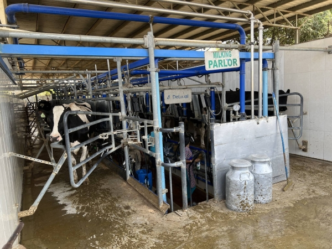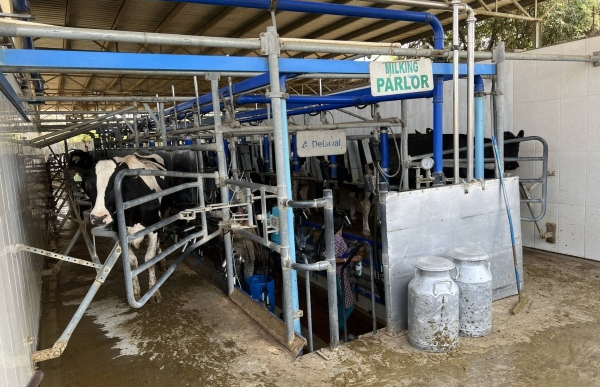Setting the Stage
In a major strategic move, Japanese automakers Toyota, Honda, and Suzuki are rapidly increasing investments in India marking a clear pivot away from China as both a market and a manufacturing base.
Together, they have committed around US $11 billion to expand manufacturing and export operations in India.
Here’s a detailed look at what’s happening, why it matters, and what it means for India and for the global auto industry.
● China’s EV market has become intensely competitive, with price wars squeezing margins. Japanese automakers are finding limited profits in that environment.
● At the same time, direct investment by Japanese firms into China’s transport/auto sector dropped significantly.
2. India offers an attractive alternative
● India has “low costs and vast labour pool” long‐standing attractions for manufacturing.
● Government incentives in India are aligned with attracting auto manufacturing and exports.
● Importantly, India currently offers a competitive edge because Chinese automakers (especially EV makers) face more barriers which reduces immediate competition for Japanese carmakers.
3. Shifting strategies of Japanese manufacturers
● Toyota is looking to expand its share in India (aiming for ~10 % of the Indian passenger‐car market by end of decade, up from ~8 %).
● Honda has declared India among its top three global priorities (along with US & Japan) and plans to produce/export one of its next‐generation electric cars from India from around 2027.
● Suzuki already dominates the Indian market and now aims to convert India into a “global production hub”.
● Toyota has announced more than US$3 billion of investment in India, including expanding an existing plant in southern India and building a new plant in Maharashtra, expected to boost its local production capacity to more than one million vehicles.
● For Honda, India will serve as the production and export base for a “Zero series” electric car by around 2027, with models exported to Japan and other Asian markets.
● Japanese direct investment in India’s transport sector jumped more than seven‐fold from 2021–24, while investment in China’s sector dropped ~83 % in the same period.
Implications for India & the Industry
● India is increasingly seen not just as a consumer market, but as a global manufacturing & export hub.
● These investments can bring jobs, technology transfer, higher‐end manufacturing, and stronger integration into global supply chains.
● The pivot could accelerate India’s emergence in electric vehicle (EV) manufacturing, component exports, and even hybrid/alternative‐fuel vehicles.
For the Japanese automakers & global supply chains
● Diversifying away from China reduces a key risk: over‐dependence on one large manufacturing base and market.
● Enhancing manufacturing in India can help them serve not only the Indian market but also export to Asia, Africa, and beyond.
● As hybrid and EV components become more important, localising production in India gives them cost and supply‐chain advantages.
● This shift signals a geopolitical dimension to manufacturing: the manufacturing map is changing due to market dynamics + broader supply‐chain resilience concerns.
● India may attract more than just Japanese players; others (from Europe, US, Korea) might follow suit or increase presence, intensifying competition but also scaling production.
● India’s competitiveness (labour, costs, incentives) will be tested it must upgrade infrastructure, logistics, supplier ecosystems to support large‐scale export manufacturing.
● India isn’t a turnkey drop‐in replacement for China it faces infrastructure bottlenecks, skill gaps, regulatory hurdles, logistical challenges. The transition still requires large effort.
● As more firms enter, competition will increase both globally and domestically (Indian firms, global OEMs). Staying ahead will require continual upgrades.
● Supply chains (especially for EV batteries, critical components) are still being built; localisation and scale take time.
● Geopolitics & trade‐policy risks remain: export markets, tariffs, trade agreements, currency risks will all affect outcomes.
This development is timely for several reasons:
● Global automakers are under pressure to restructure supply chains for resilience, not just cost.
● EVs/hybrids are growing rapidly so manufacturing needs are shifting (new components, new types of vehicles). Japan’s firms are adapting accordingly.
● India under Narendra Modi’s leadership is aggressively promoting manufacturing and export orientation so favourable policy window is open.
● China’s market growth for new entrants is slowing, margins are under pressure, so firms are looking for alternative growth engines India fits that bill.
● Scale of exports: How many vehicles made in India will be exported, and to which markets?
● EV/hybrid capacity: How quickly will India develop the ecosystem (batteries, components, charging infrastructure) to support the next wave?
● Supplier localization: Will component manufacturing (not just final assembly) scale up in India in tandem?
● Competition and cost: How will Indian manufacturing costs evolve, and how will Indian‐made vehicles fare globally?
● Policy continuity: Government incentives, trade policy, infrastructure investment will be key. If any of these falter, the momentum could slow.
The move by Toyota, Honda and Suzuki to turn India into a major production hub in their global strategy marks a significant shift in the automotive industry’s geography. India is no longer just a growth market it’s becoming a manufacturing and export power‐house for global brands, particularly in Asia. For India, this offers a major opportunity to leapfrog into higher value manufacturing, secure jobs and become a stronger node in global supply chains.
For the Japanese automakers, this pivot addresses major strategic risks tied to China while unlocking a new growth and manufacturing base aligning with the broad transformation of the auto industry towards electrification, global diversification and supply‐chain resilience.
As this shift progresses, it will be important for India to support this via infrastructure, policy, skills and ecosystem building. The next few years could shape India’s role in the global auto industry for decades.
Originally written by: By Aditi Shah, Daniel Leussink and Maki Shiraki
Link to the article: https://www.reuters.com/world/china/toyota-honda-turn-india-into-car-production-hub-pivot-away-china-2025-11-05/
















